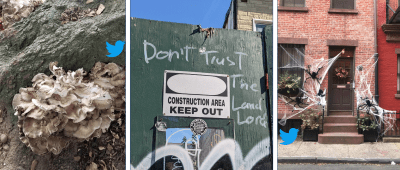More Churches in Brooklyn Are Becoming Condos
In Brooklyn condo takeover news, more of the borough’s churches are being repurposed into swank pads. Exposed brick, stained glass windows, reclaimed wood, pews (okay, we’re bluffing on the pews, but they’d make for some pretty chic dining benches, right?) and all.
DNAinfo reports that in the past two decades, Brooklyn’s “brownstone belt”—spanning Bed-Stuy to Carroll Gardens—has seen the conversion of over 20 historic churches and church buildings for residential use. The article says some neighborhood preservation stalwarts are waxing nostalgic about maintaining historic charm, calling the loss of churches a “tragedy.” Others feel turning defunct houses of worship into homesteads while maintaining their physical character is better than tearing them down. It’s practical preservation, they say. In the piece, real estate agent Brian Moskin dubs the “The Spire Lofts” in Williamsburg’s former St. Vincent De Paul Church “masterfully restored.” But authentic architecture comes with a hefty bill.
“People love the aesthetic of the reclaimed wood, old beams, exposed brick and stained glass,” he said of the units, which run from $5,000 a month for a one-bedroom to $7,384 a month for a 2 1/2-bedroom.”
Churches—especially in Brooklyn, it seems—aren’t solely places of worship anymore. And the borough’s ever-changing cultural landscape, coupled with shifting attitudes about religion and the contexts in which to practice faith has certainly mired church attendance. Enter the money-maker: cute church condos with a stained-glass view.
Some churches adapt, like Greenpoint’s Lutheran Church of the Messiah. Pastor Amy Kienzle attracts sometimes no more than five members to her Sunday service, but to allay the costs of a suffering congregation, the church hosts an array of weekly events in Messiah’s basement: ritual dance ceremonies, farmer’s markets, and local bands rent out the choir loft as a practice space. Church condos sound lucrative for developers and winsome for the wealthy. But these beautiful spaces with rich histories should be repurposed as what they essentially are: community centers.
You might also like 





















